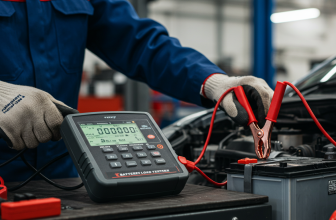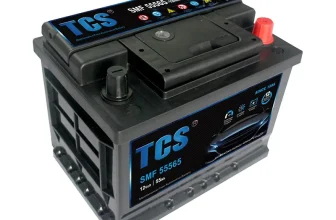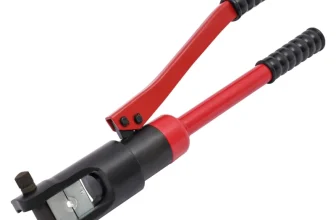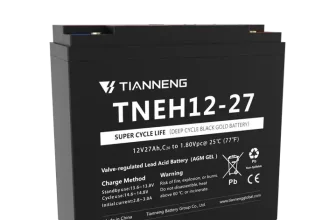Batteries play a crucial role in the functionality and performance of
mobility scooters. They serve as the power source that propels these
devices, ensures a smooth ride, and helps individuals with mobility
issues gain independence and freedom of movement. The type of battery a
mobility scooter uses significantly influences its speed, range, and
overall performance. Therefore, understanding the different types of
batteries used in mobility scooters is essential for users to make
informed decisions and to ensure they purchase the most suitable option
for their needs.
Discussion on
the different types of batteries
Mobility scooters are powered by electric batteries, available in
various types. Understanding these different battery types is essential
because they differ in performance, maintenance requirements, lifespan,
and cost. The primary types of batteries used in mobility scooters are
virtually rechargeable, and they include Sealed Lead Acid batteries, Gel
Cell batteries, Absorbed Glass Mat (AGM) batteries, and Lithium-ion
batteries. Each battery type has its advantages and challenges, making
them suitable for different riders based on their unique mobility needs
and scooter usage. Therefore, proper knowledge of these batteries can
guide you toward finding the most efficient power source for your
mobility scooter. We shall explore these batteries, their pros, cons,
and factors to consider when choosing a battery in the upcoming
sections.
Types of Mobility Scooter
Batteries
Sealed Lead Acid Batteries
Brief description
Sealed Lead Acid (SLA) batteries, also known as wet cell batteries,
are the traditional choice for mobility scooters. They are called
“sealed” because their manufacturing seals the electrolyte–a solution
consisting of sulfuric acid and water–inside the unit. As such, these
batteries allow zero maintenance in terms of adding electrolyte or
water. Comprised of lead plates submerged in the electrolyte solution,
SLA batteries produce electricity through a chemical reaction between
the lead and the acid solution. They are generally larger and heavier
than other types of batteries but are known for their reliability and
low cost, making them a popular choice for many mobility scooter
users.
Pros and cons
Sealed Lead Acid Batteries are a popular choice for mobility scooters
because they are dependable and have a relatively low cost compared to
other types on the market.
One of the main advantages of Sealed Lead Acid Batteries is their
affordability. Being one of the most inexpensive types of batteries
available, they’re a great option for those on a tight budget. They also
boast a high power output which makes them suitable even for larger,
more powerful mobility scooters. Unlike some other battery types, they
function well in a wide range of temperatures.
However, they have their disadvantages too. Sealed Lead Acid
Batteries are heavier than other types, which can make the scooter
harder to manoeuvre and transport. They also require regular maintenance
and can leak acid if not kept upright, potentially damaging the scooter
or posing a risk to the user. These batteries also have a shorter
lifespan and lower energy density compared to other types, requiring
more frequent replacements. Lastly, Sealed Lead Acid Batteries have a
longer charging time compared to other batteries like Lithium-ion.
Gel Cell Batteries
Brief description
Gel Cell Batteries are a subtype of sealed lead-acid batteries
specifically designed for mobility scooter use. The defining
characteristic of these batteries is the silica dust that’s added to the
sulfuric acid to create a gel-like substance. This gel electrolyte
reduces leakage, spillage potential, and makes them immune to damage
from vibrations or shock. They are typically housed in a sealed,
leak-proof casing.
Pros and cons
Gel Cell batteries, another type of sealed lead batteries often
utilized in mobility scooters, have several distinct advantages over
other forms. They are known for their robustness, offering high
resistance against shock and vibration due to their gel-based
electrolyte composition. This makes them highly reliable and an
excellent choice for mobility scooters that often encounter many rough
patches and terrains.
Another significant advantage of Gel Cell batteries is their
maintenance-free design. Unlike some other types, they do not require
periodic water topping. Moreover, they operate with minimal gassing on
overcharge, which significantly increases their safety attribute. These
batteries are also advantageous due to their lower self-discharge rate,
allowing them to retain charge longer when not in use.
On the other hand, Gel Cell batteries do come with their sets of
cons. Firstly, they are comparatively more sensitive to heavy discharge
rates, which makes them less suitable for heavy load use. They are also
more costly than most other types of batteries, sometimes making them a
less attractive choice for budget-conscious individuals. Furthermore,
improper charging can lead to irreparable damage, known as ‘thermal
runaway’ that reduces the lifespan and performance of these batteries.
Therefore, these batteries are best suited to users who prioritize
reliability and longevity over cost factor.
Absorbed Glass Mat Batteries
Brief description
Absorbed Glass Mat (AGM) batteries are a type of sealed lead-acid
battery that offers considerable benefits for mobility scooters. Instead
of the traditional liquid electrolyte found in other types of batteries,
AGM batteries utilize a thin fiberglass mat to absorb the battery acid,
hence their name. This physically traps the electrolyte in place and
minimizes movement. They are considered maintenance-free because of
their sealed design, preventing leakage. Offering a combination of
power, reliability, and a lower self-discharge rate, AGM batteries are
ideal for high-performance mobility scooters.
Pros and cons
Absorbed Glass Mat (AGM) batteries offer a unique set of benefits for
mobility scooter users. They are a type of Sealed Lead Acid (SLA)
battery and are particularly robust and reliable. They can withstand
high charge rates, a wide temperature range, and can even endure long
periods of inactivity without losing charge. This makes them a popular
choice for people who may not use their mobility scooters daily.
One of the main advantages of AGM batteries is their efficiency. They
offer a good balance between high performance and longevity. Their
design, which places an ultra-fine glass mat between the battery plates,
allows for faster battery recharge times and higher output when
required.
Additionally, they are low maintenance and safer, as they’re not
prone to leaking acid when handled improperly or if damaged. This is a
major advantage for people with limited mobility who may struggle with
physical maintenance tasks. They are also sealed, which makes them a
preferred choice for indoor use due to reduced chances of gas
emissions.
However, AGM batteries do have their downsides. They are typically
more expensive than other types of mobility scooter batteries, so
initial investment can be higher. Also, while they offer greater
performance, they don’t have as long a lifespan as Gel cell batteries
when regularly discharged and recharged. Lastly, overcharging an AGM
battery can result in a shortened lifespan and other damages. Therefore,
proper charging practices must be followed to ensure longevity.
Lithium-ion Batteries
Brief description
Lithium-ion batteries, also known as Li-ion batteries, are a
relatively recent development in battery technology used in mobility
scooters. They are comprised of lithium and carbon, two very light
elements, which allows them to be less bulky and lighter in weight than
other battery types. This type of battery is extremely powerful and can
store a large amount of energy in a small space, making them an
excellent choice for mobility scooters which require high levels of
power to operate efficiently. Li-ion batteries also have a high energy
density, meaning they can provide power for a longer duration compared
to other types of batteries. They don’t require a full discharge before
recharging, thus, their lifespan tends to be longer. Furthermore, they
don’t exhibit a memory effect, a common issue with some battery types
that can result in reduced battery capacity.
Pros and cons
Lithium-ion batteries, also referred to as Li-ion batteries, are a
modern solution for power in mobility scooters, known for their
lightweight feature and high energy density.
Starting with the advantages, Li-ion batteries have the highest
energy density among all types of mobility scooter batteries. This means
they can deliver more power while maintaining a significantly lower
weight. This means less strain on the scooter motor, resulting in
smoother operation. Furthermore, lithium-ion batteries don’t suffer from
memory effect, a phenomenon where repeated partial discharge/charge
cycles can cause a battery to ‘forget’ its full charge capacity. They
also have a low self-discharge rate and longer lifespan compared to
other battery types, which makes them more cost-effective in the long
run.
On the downside, they are significantly more expensive up-front
compared to other battery types. This can be a considerable deterrent
for individuals on a tight budget. Additionally, they require dedicated
chargers and are sensitive to high temperatures which can degrade the
battery’s performance if not properly managed. Nevertheless, the
benefits of Li-ion batteries often outweigh their disadvantages, making
them an excellent choice for individuals looking for a modern, efficient
power solution for their mobility scooters.
Factors
to Consider When Choosing a Battery for a Mobility Scooter
Life Cycle
When deciding on the right battery for a mobility scooter,
considering its life cycle is of paramount importance. The life cycle of
a battery refers to the number of complete charge/discharge cycles it
can perform before its capacity drops below a certain level, typically
80% of the original capacity.
High-frequency users, those who rely on their scooters for everyday
activities, should invest in batteries with long life cycles. On
average, good quality mobility scooter batteries can last between 12 to
18 months, but some top-tier batteries, particularly lithium-ion, can
last up to several years if well maintained.
While it’s attractive to opt for cheaper batteries, bear in mind that
these may need replacing more often, which translates to higher costs in
the long run. Balancing the upfront cost of a battery with its expected
life cycle can result in significant savings and ensure ongoing,
dependable use of your mobility scooter.
Maintenance Requirements
The maintenance requirements for mobility scooter batteries vary
depending on the type selected. Some batteries demand frequent upkeep to
ensure they function at optimum capacity, while others require minimal
maintenance.
Sealed Lead Acid (SLA) batteries, for instance, demand very little
maintenance. This is because they are completely sealed, making them
immune to leakage or evaporation. However, they must be used regularly
to prevent stagnation and decreased performance.
Gel Cell batteries also demand little maintenance, but they are more
susceptible to damage if they are overcharged frequently. Therefore,
caution must be taken not to overcharge these batteries.
Absorbed Glass Mat (AGM) batteries are similar to the gel cell
batteries in that they require minimal maintenance. Despite this, these
batteries have a shorter lifespan and can deteriorate faster if not
properly taken care of.
Lastly, Lithium-ion batteries require the least maintenance. However,
they require specific chargers and careful handling to prevent damage.
It’s also crucial to avoid completely discharging these batteries, as it
may shorten their lifespan.
Always remember, carefully reading and understanding the user manual
of any battery you purchase is key. Most manufacturers provide detailed
instructions on how to take care of the batteries to ensure they serve
you for a long time.
Charging Speed
Charging speed is a significant factor when choosing a battery for
your mobility scooter. This measures how quickly the battery can
replenish its stored energy. If you use your scooter frequently or for
long distances, a battery that charges quickly may be crucial. In
general, lithium-ion batteries charge the fastest, with some models
having the potential to fully charge in only a few hours. Absorbed glass
mat (AGM) and gel cell batteries typically require longer charge times,
often needing up to 8 hours for a full charge. Sealed lead acid
batteries also tend to demand longer charging durations.
It’s also worth remembering that faster charging speeds can
invariably lead to more heat production, which could affect the
battery’s lifespan if not managed well. Always look for a battery that
balances charging speed with longevity and efficiency for the best
overall performance. The choice surely depends on your personal needs
and how you plan to use your mobility scooter.
Weight and Size
The weight and size of the battery can also significantly influence
your mobility scooter performance. Mobility scooters are designed with
limited space for batteries, thus it’s important to choose a battery
that fits perfectly. Always be sure to cross-check the battery
dimensions with those provided in the scooter’s user manual before
making a purchase.
On the other hand, weight can impact the overall performance and
speed of your scooter. Heavier batteries can lead to increased scooter
weight which in return, might reduce the scooter’s maneuverability and
speed. To avoid this issue, look for a battery that offers a good
balance between weight and performance. Batteries made with advanced
technology, such as lithium-ion types, often weigh less compared to
traditional Sealed Lead Acid or Gel batteries and can be a considerable
option if scooter weight is a major concern for you.
Price
When choosing a battery for your mobility scooter, price is
undoubtedly an important factor. Batteries for mobility scooters can
range in cost from around $50 to several hundred dollars, largely
depending on the type and quality of the battery. Although it may be
enticing to go for the cheapest option available, it’s essential to
remember that a low price may equate to short battery life and poor
performance. On the other hand, some high-end batteries can hold their
charge for a longer duration and provide a smoother ride, but they can
become quite expensive.
Furthermore, the total cost of a battery doesn’t just lie in its
price tag. The battery’s longevity, maintenance requirements, and how
often it needs to be replaced all factor into its total cost. For
instance, certain types of batteries might be more expensive upfront but
less costly in the long run as they last longer and require less
frequent replacements. Consequently, it’s critical to analyze both the
initial cost and the long-term value of a battery before making a
purchasing decision.
Remember, a battery is an essential part of your mobility scooter and
its investment should match the frequency and manner in which you use
your scooter. Balancing affordability and quality will result in the
best possible battery option for your mobility scooter, catering to your
personal mobility needs while also fitting your budget.
Battery Care and Maintenance
How to
properly charge a mobility scooter battery
Properly charging your mobility scooter battery is vital to ensuring
its long lifespan.
To get started, you need to know that each battery type has a
specific charging requirement that ought to be followed. For example, a
sealed lead acid battery usually requires an overnight charge for
optimum performance.
Before charging, verify that the scooter is turned off. Connect the
charger to the scooter prior to connecting it to the electrical outlet.
Chargers designed for mobility scooters are smart chargers which stop
charging once the battery has reached its full capacity. This means you
can leave it on overnight without fearing that it might overcharge.
However, it’s important not to let the battery fully drain before
charging it. Doing so consistently can negatively affect the battery’s
life cycle. Ideally, it’s recommended to recharge the battery once it
hits the 50% capacity mark. This is especially crucial for lithium-ion
batteries.
Temperature also plays an integral part in charging your battery.
Optimal charging usually occurs at room temperature. Too cold or too hot
conditions can hinder the battery’s ability to hold charge.
Lastly, proper charger handling and storage should not be overlooked.
After each use, disconnect and store the charger in a dry and cool place
until its next use. These steps are crucial in ensuring the efficiency
and longevity of your mobility scooter battery’s lifespan.
Extending the life of your
battery
Taking proper care of your mobility scooter battery can significantly
extend its life, saving you both time and money in the long run. Here
are some tips to help prolong the longevity of your battery:
- Regular Charging: It’s crucial to charge the batteries regularly,
preferably after every use. For those using their mobility scooters
daily, charging them overnight can be a good habit to develop. Regular
charging keeps the batteries in a healthy state and improves their
performance. - Avoid Complete Discharge: Try not to let the battery discharge
completely before recharging it. Deep discharges can reduce the lifespan
of batteries. Most experts recommend recharging when the remaining
battery power drops to 20-30%. - Use Appropriate Chargers: Always use the scooter’s original
manufacturer charger or a charger with specifications approved by the
manufacturer. Using non-compatible chargers can damage the battery cells
and shorten their lifespan. - Store Properly: If you won’t be using your mobility scooter for a
while, make sure to store the battery in a cool and dry place, and check
on its charge status regularly. Batteries stored for long periods should
be fully charged and recharged every few weeks to maintain their
health. - Keep it Clean: Dust and dirt can interfere with the battery
contacts, reducing the efficiency of energy transfer. Keep both the
battery and its contacts clean and free from dust and
corrosion. - Moderate Temperature: Extreme temperatures can have detrimental
effects on batteries. Try to store and operate your mobility scooter in
moderate temperature conditions.
By following these simple yet effective tips, you can enhance the
performance and prolong the lifespan of your mobility scooter battery,
making your rides smoother and more enjoyable.
Safety precautions
when handling batteries
Handling mobility scooter batteries should always be done with utmost
caution due to their potential hazards. Here are some safety precautions
you should follow:
- Wear Protective Gear: Always use gloves and protective eyewear
when handling batteries. This can protect your skin and eyes from harm
if a battery were to leak or explode. - Ventilation: Batteries can release harmful gases. Therefore, it’s
important to handle them in a well-ventilated area. If a battery begins
to swell or leak, move it to a well-ventilated area and avoid inhaling
any gases it may emit. - Avoid Short Circuits: Serious harm can occur if a battery is
short-circuited. Always ensure tools or other objects that can cause a
short circuit are kept away from the battery’s terminals. - Correct Disposal: If a battery has reached the end of its
lifespan, it’s important to dispose of it correctly. Many types of
batteries contain toxic materials which are harmful to the environment.
Look for local recycling centers or events that accept old
batteries. - Handle with Care: Although batteries are designed to be robust,
dropping or damaging them can cause leaks or explosions. Always handle
them gently and avoid causing any damage.
Adhering to these precautions can go a long way toward ensuring your
safety while handling mobility scooter batteries. It’s always better to
be safe than sorry and these guidelines provide a proven path to safety.
Remember, the best way to deal with battery-related accidents is to
prevent them from occurring in the first place.
Conclusion
Summary
of the importance and types of mobility scooter batteries
Mobility scooters play a significant role in ensuring enhanced
independence and convenience for individuals with mobility limitations.
Central to the operation of these devices are the batteries, powering
the scooter’s movement and functionality. From sealed lead-acid, gel
cell, absorbed glass mat to lithium-ion batteries, each type offers
unique pros and cons. They vary in factors like life cycle, maintenance
requirements, charging speed, weight, and size, aspects which users
should bear in mind when selecting the most suitable battery based on
their specific needs. Moreover, appropriate care and maintenance are
paramount to extend the life of the battery and to ensure safe handling.
Thus, the right battery not only optimizes the performance of the
mobility scooter but also contributes to a safe and comfortable riding
experience.
Final thoughts
on battery choice and maintenance
Choosing the right battery for your mobility scooter shouldn’t be a
daunting task. It’s essential to consider the various types of batteries
and their unique characteristics – be it Sealed Lead Acid, Gel Cell,
Absorbed Glass Mat, or Lithium-ion. Your choice will be influenced by
several factors, like life cycle, maintenance needs, charging speed,
weight, size, and price.
Taking care of your battery also comes with its own set of
responsibilities. Proper charging, extending its life, and the necessary
safety precautions are integral to efficient battery maintenance. Each
battery type might have specific ways of care and handling, so it’s
crucial to understand these aspects as well.
In conclusion, knowing the different types, understanding each of
their pros and cons, learning how to maintain them properly, and making
an informed decision based on your specific needs, are all critical
elements in managing the battery of your mobility scooter efficiently.
Make the right choice and prolong your independent mobility.







